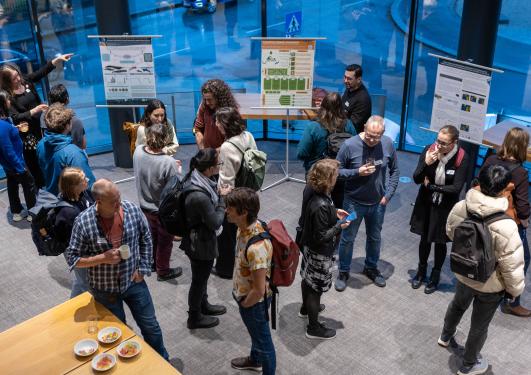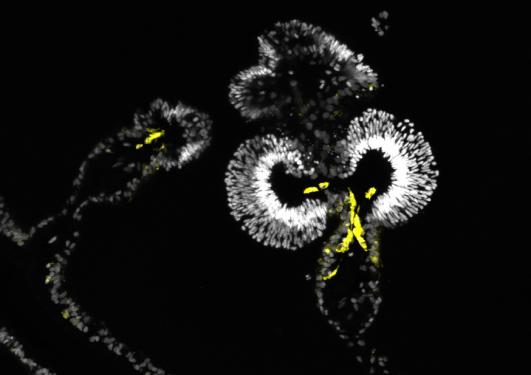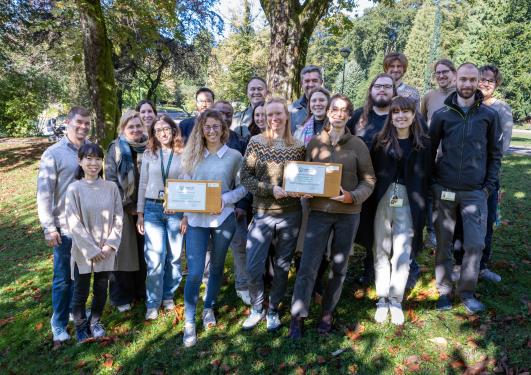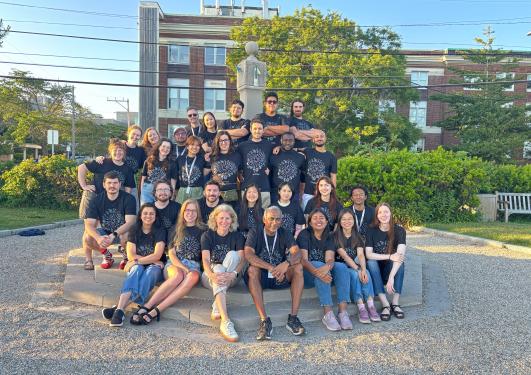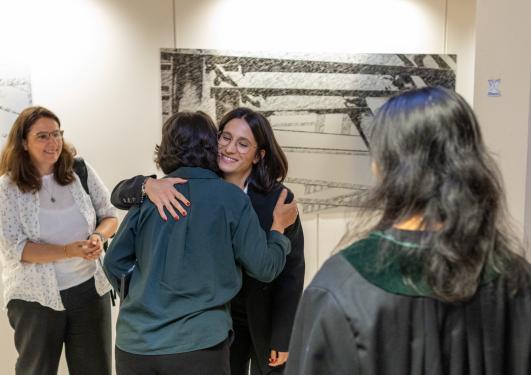News archive for Michael Sars Centre
From deep-sea research to biomedical advances, the event created valuable connections across the local biological sciences community.
New work from the Steinmetz group at the Michael Sars Centre unveils the secrets behind the starlet sea anemone's extraordinary ability to adjust its body size according to food availability.
As the University Museum celebrates its 200 years jubilee, researchers reflected on breakthroughs in biological sciences made at UiB and how they relate to today’s research.
Efforts to make the Christiaen and Burkhardt laboratories more sustainable were rewarded with the highest-level certification from international environmental organization My Green Lab. The initiative received support from the UiB Climate Fund.
Guillaume Poncelet, postdoctoral researcher in the Christiaen group, will receive funding from the UiB Idé innovation program to develop a novel product inspired by marine life.
This summer, PhD candidate Max Jordi Makem Pekouankouang from the Christiaen group at the Michael Sars Centre attended the prestigious Embryology course at the Marine Biological Laboratory in Woods Hole, USA. He shares how this experience transformed his approach to science.
On the 22nd of August 2025, PhD candidate Inés Fournon Berodia successfully defended her thesis titled “Epithelial cell extrusion drives cell loss during starvation-induced shrinkage in a sea anemone”.
Researchers from the Institut de la Mer de Villefranche and the Michael Sars Centre received support from the French-Norwegian mobility program Åsgard. Through seminars and discussions, participants laid the groundwork for a long-term collaboration between the two institutes.
The Michael Sars Centre is launching a Visitors Program designed to foster scientific exchange and collaborations across disciplines.
The fourth edition of the Michael Sars Symposium brought together experts from a variety of research fields within biology, all united by a common theme – evolution.
This month, collaborators from Paris Aquarium visited the Michael Sars Centre. They brought with them an unusual species of ctenophore, and went on a mission to collect Norwegian specimens for Europe’s largest jellyfish exhibit.
Head engineer Anne Aasjord collaborated with researchers at NORCE on a project to better understand the ecological relevance of the small planktonic animals. The work was recently highlighted in a documentary, watch it below!
Anoctamins play a key role in sensory perception in mammals. A new article by the Chatzigeorgiou group reveals their dual role in perception and larval metamorphosis in the chordate Ciona.
Researchers from the Michael Sars Centre participated in the third edition of One Ocean Week. On the program, engaging the public with our research projects and exchanging with industry stakeholders.
In the spring of 2025, general elections have been held for the faculty boards and department councils at the NT faculty, including the Michael Sars Centre's Advisory Board. The results of the election are now available.
A new study conducted in the Lynagh group shows that closely related neuropeptide receptors do not always recognize ligands in the same way. The work lays out the blueprint for ligand recognition in this receptor family.
As the ocean warms, researchers are racing to uncover the impact of the climate crisis on marine life. In an innovative multi-scale project, developmental biologist Lionel Christiaen sets the focus on the very beginnings of life in a changing environment.
Rogue or freak waves (monster waves) are exceptionally large waves that can suddenly loom into existence, seemingly from nowhere. Are these waves truly different from ordinary storm waves, or are they just what you should expect to see if you wait long enough?
Pages
- December 2025 (2)
- October 2025 (2)
- September 2025 (2)
- August 2025 (1)
- July 2025 (1)
- June 2025 (2)
- May 2025 (2)
- April 2025 (2)
- March 2025 (1)
- February 2025 (4)
- January 2025 (4)
- December 2024 (1)
- November 2024 (2)
- October 2024 (6)
- September 2024 (2)
- August 2024 (4)
- July 2024 (2)
- June 2024 (3)
- May 2024 (2)
- April 2024 (4)
- March 2024 (2)
- February 2024 (3)
- January 2024 (1)
- December 2023 (2)
- November 2023 (1)
- October 2023 (3)
- September 2023 (3)
- August 2023 (4)
- July 2023 (1)
- June 2023 (3)
- May 2023 (2)
- April 2023 (3)
- February 2023 (3)
- January 2023 (2)
- December 2022 (1)
- November 2022 (1)
- October 2022 (1)
- September 2022 (2)
- August 2022 (1)
- June 2022 (1)
- March 2022 (2)
- January 2022 (1)
- December 2021 (1)
- November 2021 (1)
- April 2021 (1)
- March 2021 (1)
- October 2020 (2)
- August 2020 (1)
- June 2020 (1)
- April 2020 (2)
- March 2020 (1)
- October 2019 (1)
- August 2019 (1)
- June 2019 (1)
- April 2019 (1)
- February 2019 (1)
- January 2019 (2)
- February 2017 (1)
